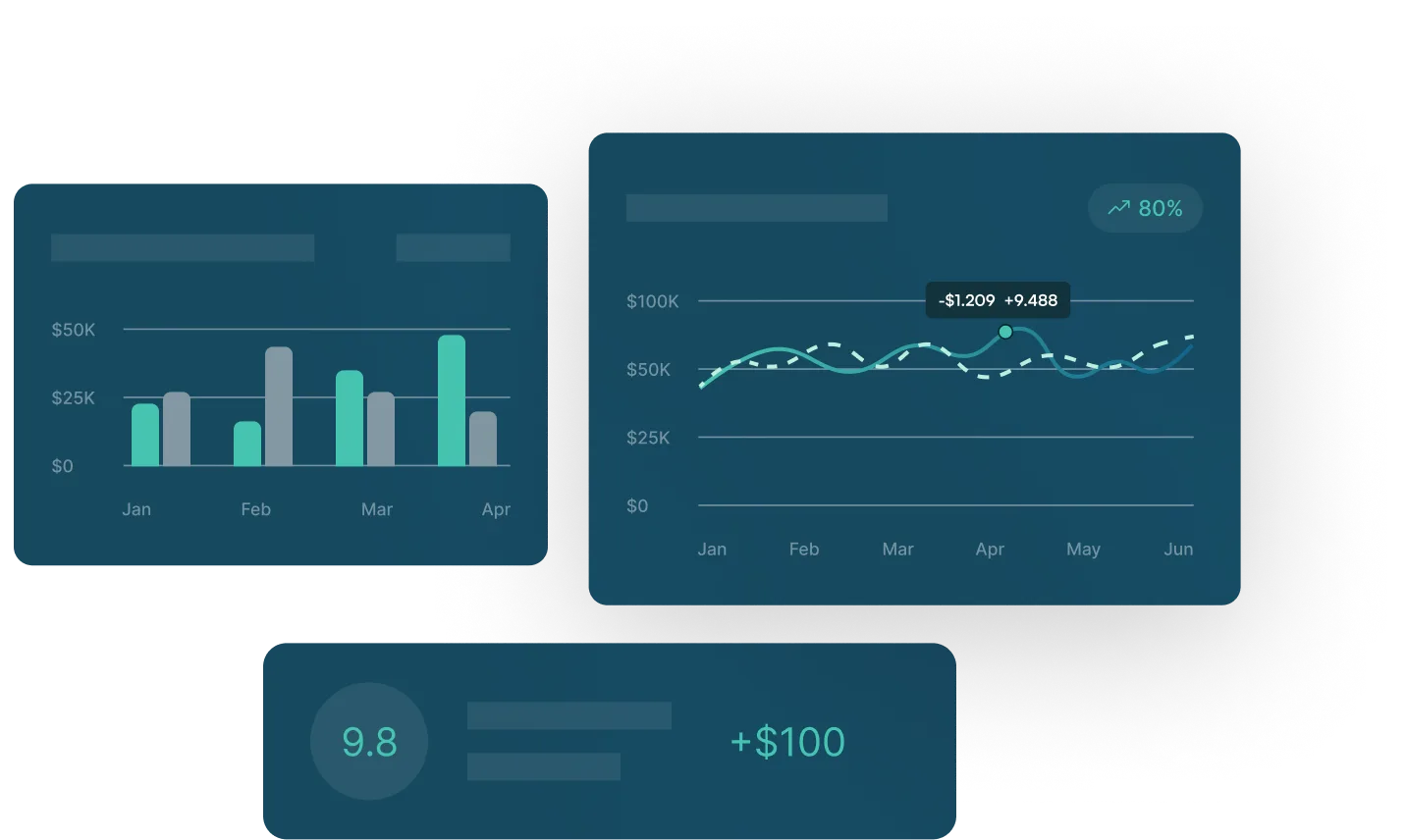Is Your Balance Sheet Hedge Putting Your Cash at Risk?
.jpeg)
.jpeg)
Most treasury professionals are comfortable gathering and netting down same currency exposures that go in opposite directions.
For example, one might hedge GBP receivables net of GBP payables in a single sell forward balance sheet hedge. As accounts receivables (A/R) are collected and account payables (A/P) are paid, the hedge position changes and cash is converted from foreign currency to USD at the hedge rate via a currency swap or delivery — if the timing is right.
But what happens when a company has a really long-dated liability — such as a foreign real estate lease contract — that nets or more than nets the short-dated accounts receivable? The result can be unexpected, and questions arise:
While the foreign exchange gain/loss line will be protected, what happens to cash upon A/R collection and conversion? What rate are we getting? Did we protect our cash? Isn’t a balance sheet hedge program ultimately about protecting the future USD value of cash flows?
Digging Deeper Into Off-Balance Hedges
Following the example above, let’s assume your company has a USD functional foreign subsidiary with a five-year foreign GBP denominated lease liability. At the same time, your company sells in GBP with 90-day terms. Let’s also assume that the lease is slightly larger than the accounts receivable balance.
A standard balance sheet hedge program would net off the lease liability (monetary liability) against the A/R (monetary asset) and then hedge the residual balance by buying GBP forward with a currency contract. This is a good hedge for protecting the foreign currency gain/loss line but a terrible hedge for protecting near term cash flow.
Due to the mechanics of the hedge program, A/R would convert at the current spot rate and a new buy forward hedge layer would be added to the now larger net liability position. This would repeat for the duration of the 5-year lease period.
At-Risk Cash
If your company follows this hedge strategy, then all of the A/R will be converted at spot, which is not the hedge rate. Spot rate changes over time could result in large swings in USD cash conversions.
A best practice hedge program should protect cash flows just as much as it protects the gain/loss line. You could even argue that cash is more important than P&L volatility in the long-term, since cash flow from operations drives stakeholder value. So, how can you protect both?
Hedging Thoughtfully
Thinking through the large timing difference reveals a second hedge strategy that’s better aligned to protect both cash in the near term and the gain/loss line.
Instead of robotically combining all long-term and short-term exposures into one hedge, you could separate the two exposure profiles into two hedges. First, you could implement a basic balance sheet hedge strategy (such as selling GBP forward to the approximate collection date) to hedge the accounts receivable. This protects cash and the P&L for its monetary assets.
Second, ASC 815-20-25-66 states that “…a nonderivative financial instrument that may give rise to a foreign currency transaction gain or loss under Subtopic 830-20 can be designated as hedging the foreign currency exposure of a net investment in a foreign operation.”
Therefore, for the long-term GBP lease, you could designate the lease liability as a hedge of its GBP net investment (net asset position), assuming it has enough GBP functional entities to apply the lease value (or substantially all of the lease value) against.
Spot to spot changes in the value of the lease could then be recorded to cumulative translation adjustment (CTA), which avoids any income statement volatility. As your company collects GBP, the balance sheet hedge will convert excess GBP cash into USD at the hedge rate, and a portion of GBP collections could remain in foreign currency to meet monthly lease payment demands, which are relatively small compared to the present value of all lease payments designated.
Alternatively, companies without a sufficient net investment could balance sheet hedge the lease liability in a separate hedge, or they could cash flow hedge the lease liability to achieve the same goal but allow for better management of forward points impacting the income statement.
Conclusion
Balance sheet hedging is fairly straightforward, but there are some issues that arise when you forget about protecting your cash. While netting global exposures is commonplace, netting down certain exposures may have consequences when there are mismatches in the timing of foreign cash flows.
In this accounts receivable/lease hedge example, it became clear that the A/R cash flows were not protected into USD. This is a critical requirement of a balance sheet hedge program and may be even more important than income volatility mitigation in the long-term.
Is Your Balance Sheet Hedge Putting Your Cash at Risk?
Most treasury professionals are comfortable gathering and netting down same currency exposures that go in opposite directions.
For example, one might hedge GBP receivables net of GBP payables in a single sell forward balance sheet hedge. As accounts receivables (A/R) are collected and account payables (A/P) are paid, the hedge position changes and cash is converted from foreign currency to USD at the hedge rate via a currency swap or delivery — if the timing is right.
But what happens when a company has a really long-dated liability — such as a foreign real estate lease contract — that nets or more than nets the short-dated accounts receivable? The result can be unexpected, and questions arise:
While the foreign exchange gain/loss line will be protected, what happens to cash upon A/R collection and conversion? What rate are we getting? Did we protect our cash? Isn’t a balance sheet hedge program ultimately about protecting the future USD value of cash flows?
Digging Deeper Into Off-Balance Hedges
Following the example above, let’s assume your company has a USD functional foreign subsidiary with a five-year foreign GBP denominated lease liability. At the same time, your company sells in GBP with 90-day terms. Let’s also assume that the lease is slightly larger than the accounts receivable balance.
A standard balance sheet hedge program would net off the lease liability (monetary liability) against the A/R (monetary asset) and then hedge the residual balance by buying GBP forward with a currency contract. This is a good hedge for protecting the foreign currency gain/loss line but a terrible hedge for protecting near term cash flow.
Due to the mechanics of the hedge program, A/R would convert at the current spot rate and a new buy forward hedge layer would be added to the now larger net liability position. This would repeat for the duration of the 5-year lease period.
At-Risk Cash
If your company follows this hedge strategy, then all of the A/R will be converted at spot, which is not the hedge rate. Spot rate changes over time could result in large swings in USD cash conversions.
A best practice hedge program should protect cash flows just as much as it protects the gain/loss line. You could even argue that cash is more important than P&L volatility in the long-term, since cash flow from operations drives stakeholder value. So, how can you protect both?
Hedging Thoughtfully
Thinking through the large timing difference reveals a second hedge strategy that’s better aligned to protect both cash in the near term and the gain/loss line.
Instead of robotically combining all long-term and short-term exposures into one hedge, you could separate the two exposure profiles into two hedges. First, you could implement a basic balance sheet hedge strategy (such as selling GBP forward to the approximate collection date) to hedge the accounts receivable. This protects cash and the P&L for its monetary assets.
Second, ASC 815-20-25-66 states that “…a nonderivative financial instrument that may give rise to a foreign currency transaction gain or loss under Subtopic 830-20 can be designated as hedging the foreign currency exposure of a net investment in a foreign operation.”
Therefore, for the long-term GBP lease, you could designate the lease liability as a hedge of its GBP net investment (net asset position), assuming it has enough GBP functional entities to apply the lease value (or substantially all of the lease value) against.
Spot to spot changes in the value of the lease could then be recorded to cumulative translation adjustment (CTA), which avoids any income statement volatility. As your company collects GBP, the balance sheet hedge will convert excess GBP cash into USD at the hedge rate, and a portion of GBP collections could remain in foreign currency to meet monthly lease payment demands, which are relatively small compared to the present value of all lease payments designated.
Alternatively, companies without a sufficient net investment could balance sheet hedge the lease liability in a separate hedge, or they could cash flow hedge the lease liability to achieve the same goal but allow for better management of forward points impacting the income statement.
Conclusion
Balance sheet hedging is fairly straightforward, but there are some issues that arise when you forget about protecting your cash. While netting global exposures is commonplace, netting down certain exposures may have consequences when there are mismatches in the timing of foreign cash flows.
In this accounts receivable/lease hedge example, it became clear that the A/R cash flows were not protected into USD. This is a critical requirement of a balance sheet hedge program and may be even more important than income volatility mitigation in the long-term.
.jpeg)
See GTreasury in Action
Get connected with supportive experts, comprehensive solutions, and untapped possibility today.































.png)







.png)












.jpeg)

.jpeg)


.jpeg)







.jpeg)

.jpeg)





.jpeg)


.jpeg)









.jpeg)



.jpg)





